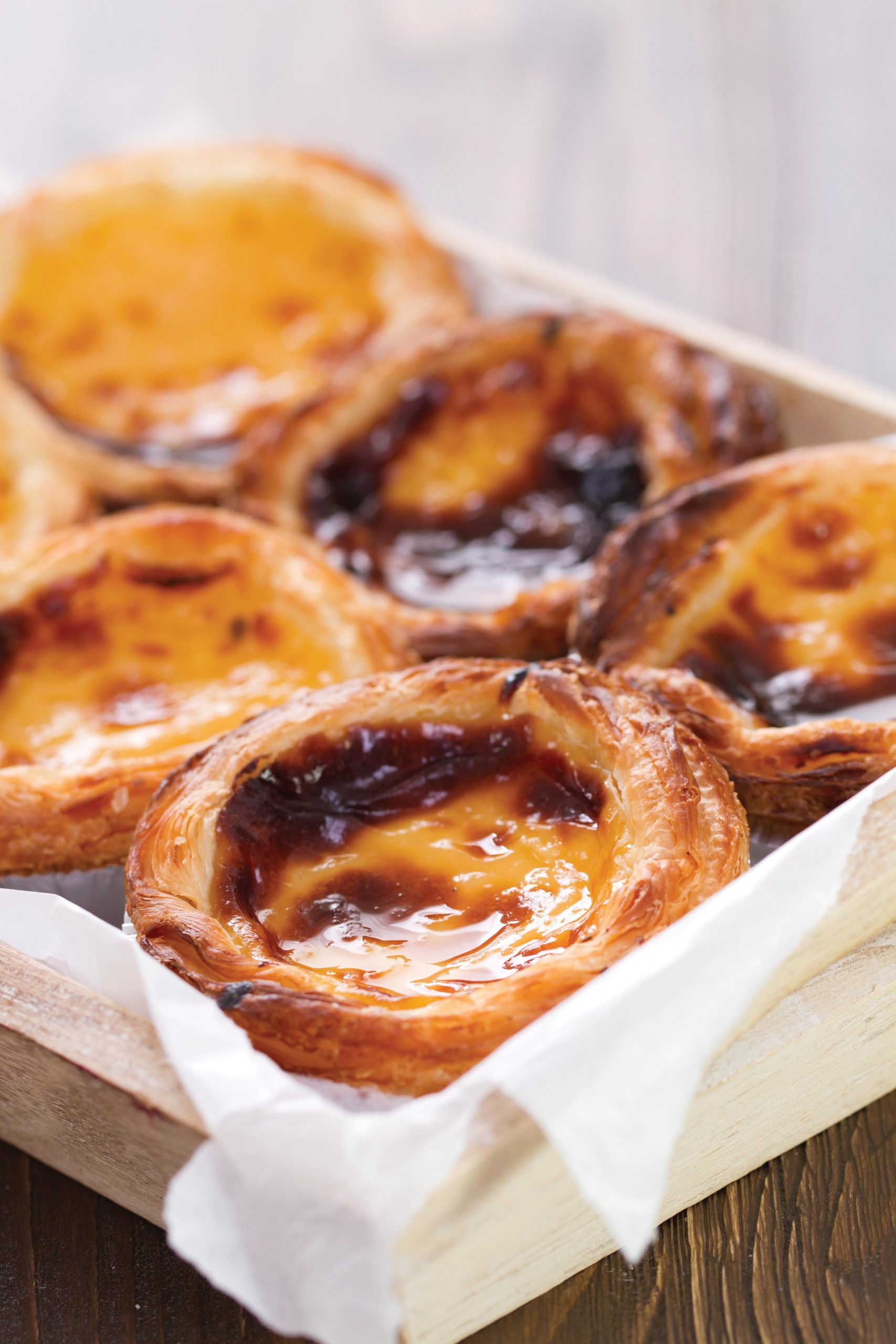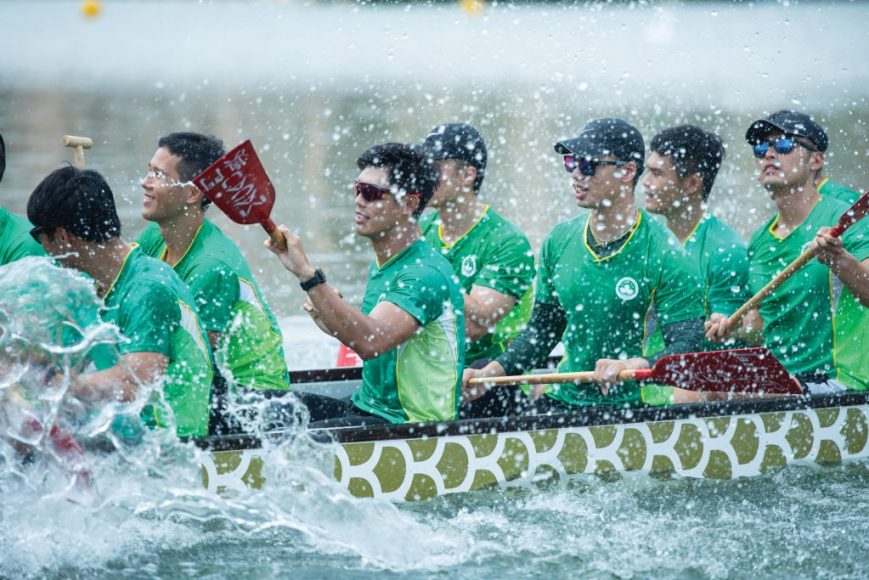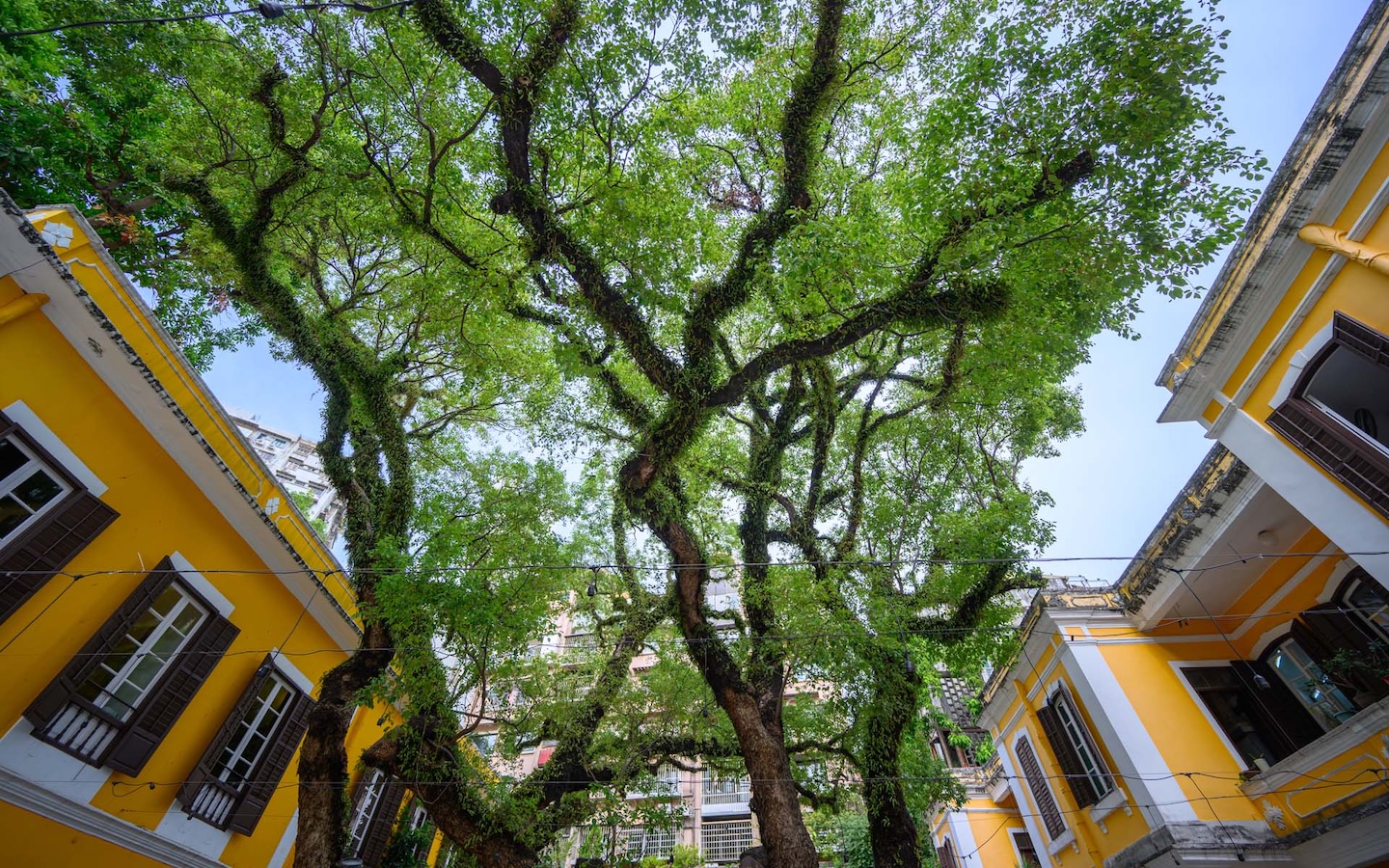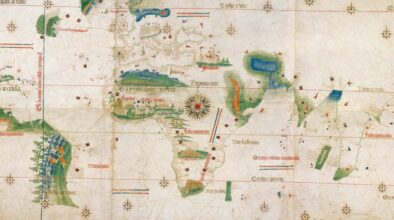In 2017, Macao’s government named 15 items of intangible cultural heritage in the city that it vowed to protect. Over the past couple of weeks, it has added another 55 items to the list. We take a look at these new additions – and find out why we must preserve our traditions.
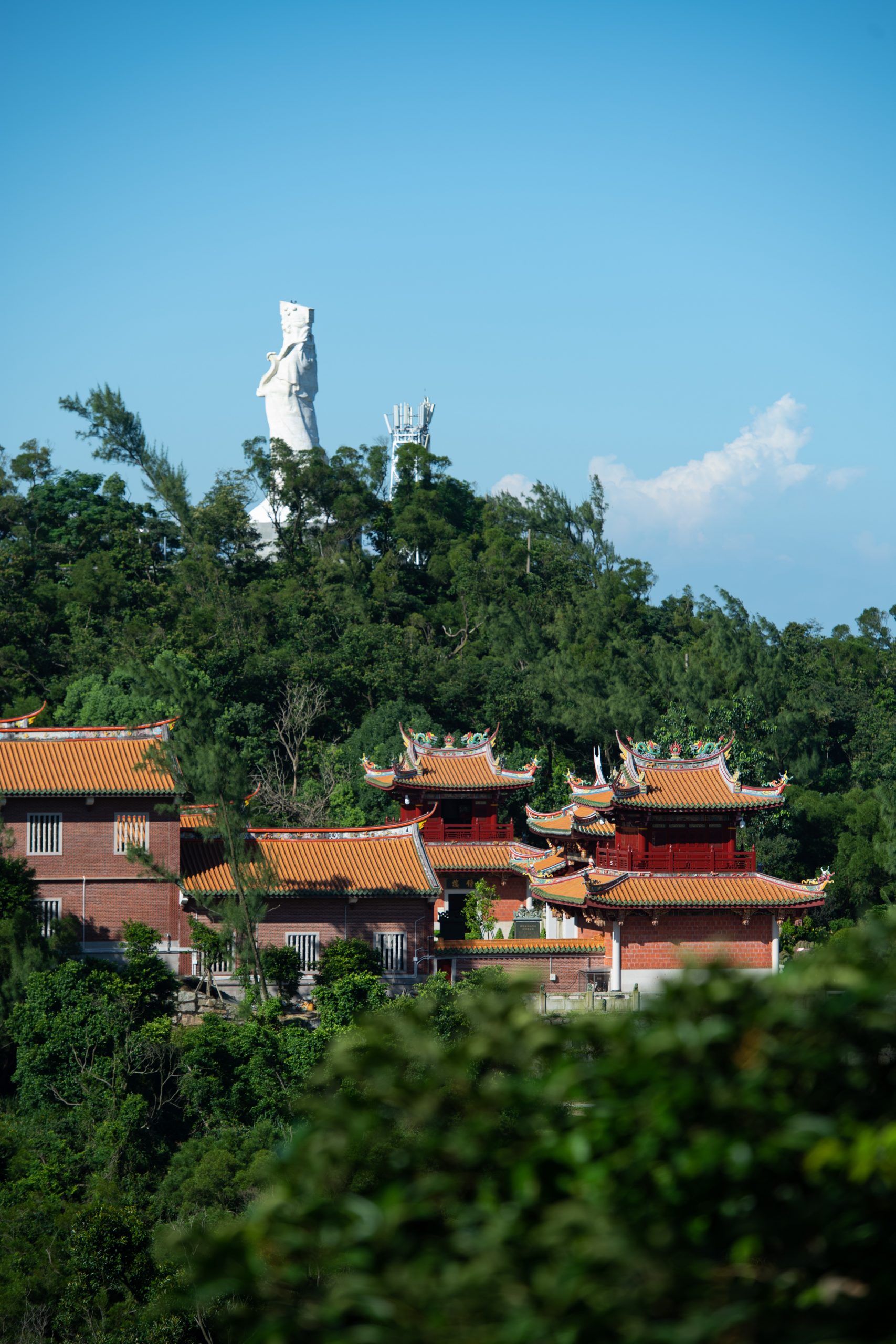
Most people know what tangible heritage is – a city’s physical history, such as its archaeological sites, historic monuments, ancient buildings and old artifacts. But equally important is a city’s intangible cultural heritage – its local beliefs, customs, events, festivals, foods, rituals, arts and crafts that have been passed down over many generations, sometimes over hundreds of years. In Macao’s case, some traditions have been passed down over the past 450 years.
Macao has many examples of tangible heritage – not least with its historic centre, which earned official recognition as a UNESCO World Heritage Site in 2005 – but it also has a plethora of intangible heritage examples. And the government is committed to preserving them for generations to come. “Intangible cultural heritage is a cultural lifestyle and a spiritual phenomenon that has been circulating a long time but is still alive and developing,” says Professor Zhu Shoutong, director of the Centre for Chinese History and Culture, which is based at the University of Macau. “It vividly connects tradition and reality – and it continues to impact people’s lives in the future.”
These new items reinforce our responsibility to bring out these traditions from the past to the present. Otherwise, they will fade away and be forgotten.
For the purpose of preservation and inheritance, the city’s Cultural Affairs Bureau (IC) published an inventory that listed 15 items of Macao’s intangible cultural heritage in 2017. On it were a handful of Taoist customs, a couple of Christian processions, a type of Cantonese opera, the entirety of Macanese gastronomy and a few other items of local importance. And these items stood alone for three years until last month, when another 55 were added, bringing the total number of items that the government wants to preserve up to 70. When the IC announced the additions, it said it pledged to continuously ‘promote the studies and research on Macao’s intangible cultural heritage’ and to ‘update the inventory in order to reinforce protection and inheritance of the precious heritage of Macao’.
Dragon’s beard to dragon dances
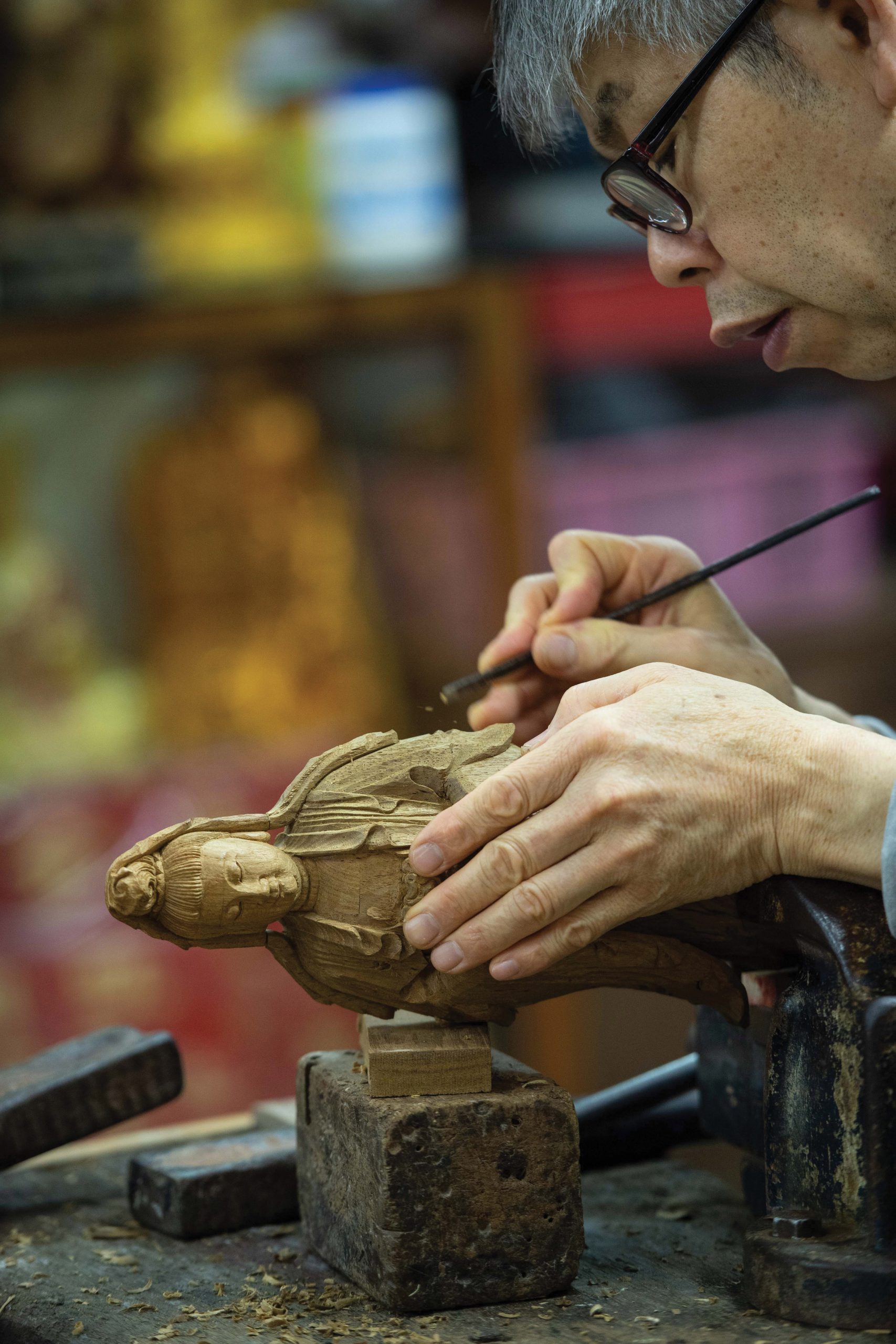
The 55 new additions to the inventory are as diverse as they are comprehensive, seemingly covering every intangible piece of history that collectively make Macao unique. There’s dragon and lion dances, folk dances and songs, many Catholic and Taoist festivals, martial arts, artisanal skills and all sorts of traditional foods like dragon’s beard candy and egg tarts. “It’s such a big move that the IC announced the addition of 55 new items at one time,” says Prof Zhu. “Not only does it demonstrate the bureau’s increasing attention to the protection of intangible cultural heritage but it also shows that they already have a deeper understanding about intangible cultural heritage and that their work on cultural management has become more professional and proactive.”
According to Prof Zhu, this addition of 55 new items to the inventory is ‘a testimony to Macao’s profound cultural accumulation’ and its ‘identity as an important base for the exchange of Eastern and Western culture’. He says: “The inventory has truly reflected the cultural charm and uniqueness of Macao, where various cultures and traditions can thrive alongside the dominant Chinese culture.”
As this is our Gastronomy Issue, it’s important to note quite how many new items on the inventory are of a culinary nature. Macanese gastronomy as a whole was already inscribed on the list but some of the new food items originally hailed from the East, like dragon’s beard candy, a traditional fluffy snack that dates back more than 1,000 years in China and is still sold as street food today (see our Street Food feature on p40), or from the West, like ‘alua’, a dessert that’s mostly eaten during Christmas in Macao and originated in Portugal. Egg tarts, which also came from Portugal before being given a particularly local style, are now included in the inventory, as are Chinese pastries and sauces, almond biscuits and preserved fruits.
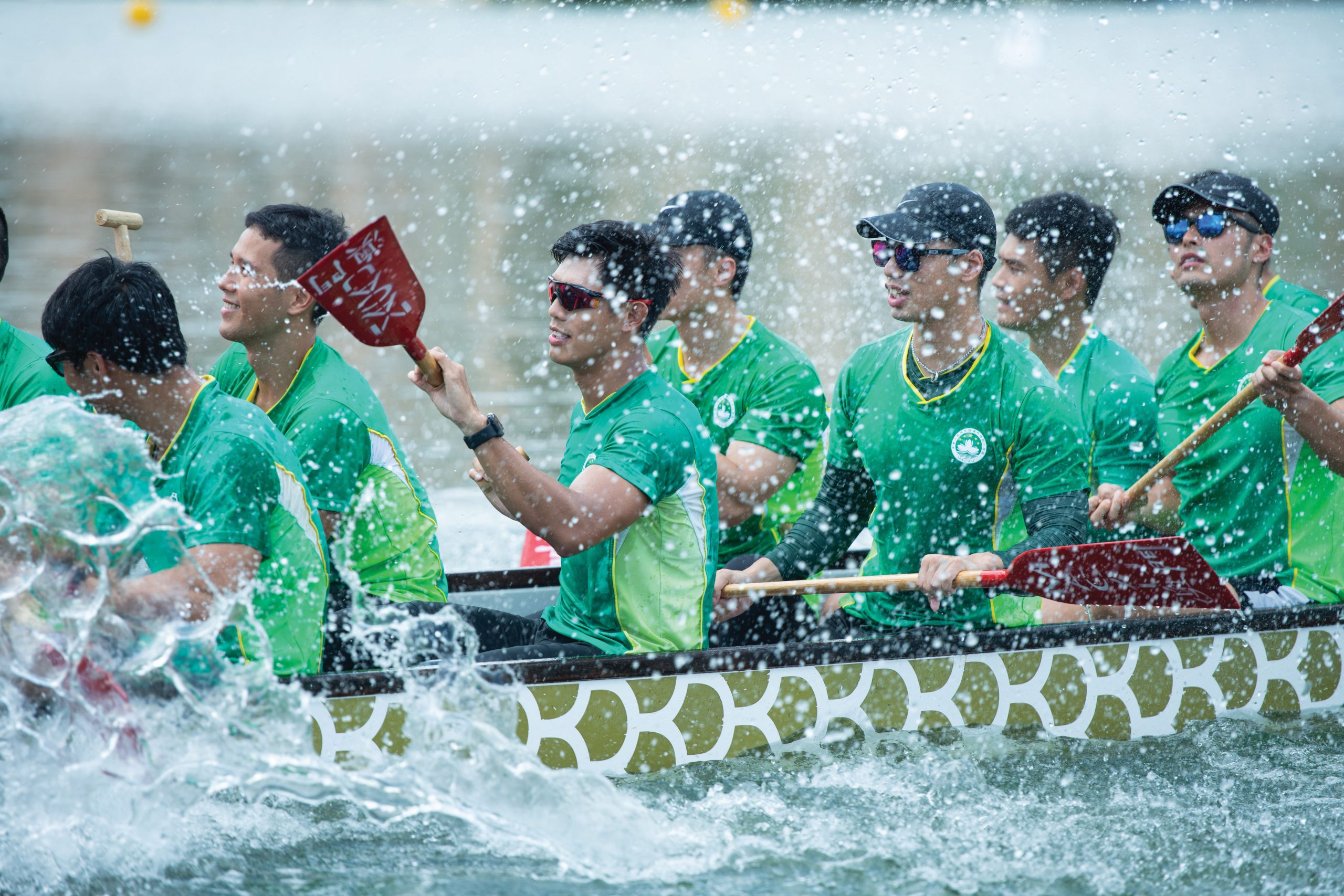
Some of the new festival items also hail from both the East and the West. From the East, dragon and lion dances are obvious activities at many festivals but specific events include the annual Tung Ng or Dragon Boat Festival which sees colourful boat races in the city’s waters and a raft of birthday celebrations for Taoist deities like Seak Kam Tong, Pao Kong and Kun Iam. From the West, many Catholic processions, feasts and events have been added like the Procession of the Dead Lord, which commemorates the death of Jesus, and the Procession of St Anthony of Padua, the patron saint of lost people. Plus, there are purely local events that have been added, like the Feast of St John, which celebrates, with a day of music, dancing and a lively bazaar, a saint who was believed to have ‘given a helping hand’ to the successful Portuguese defenders of Macao when more than 800 Dutch invaders were thwarted in 1622.
Martial arts like tai chi and Wing Chun are now on the list, as are the ‘conventional skills and techniques of traditional handicrafts’ like the manufacture and painting of Portuguese tiles, the making of Chinese wedding dresses and the manufacture of Chinese porcelain. Some of these old crafts, including the manufacture of incense sticks, were once boom industries in Macao, however by placing them on the inventory, more protection may be given to these traditions in the future.
Traditional music and art also appear on the new-look inventory, including Portuguese folk dancing and saltwater songs, which are oral expressions that reflect the culture of the fishermen in Macao. Baatyam percussion is also one of the new items. This is a type of Taoist music that’s performed at occasions such as weddings, festivals and funerals. According to William Ng, the president of the Macao Taoist Association and the ‘inheritor’ of the Baatyam percussion tradition in Macao, the new items have gone through careful evaluation and assessment by the IC over the past few years. Now that they are inscribed on the inventory, Ng believes that it’s more important than ever for ‘inheritors’ like him to promote and ‘rescue’ these diminishing traditions. “The inscription is a recognition that these items are native traditions,” he says. “It reinforces our responsibility to bring out these traditions from the past to the present so we can let more people know about them. Otherwise, they will fade away and be forgotten.”
Passing on the past
Prof Zhu agrees that it’s important to preserve the city’s intangible heritage items as their passing down reflects the cultural awareness of people in a society. “Just like tangible cultural heritage,” he says, “intangible cultural heritage represents the precious memories of a place, a city and a group of people from a certain era. Its inheritance is the fruit of the endeavour of more than one generation.”
Under the city’s Cultural Heritage Protection Law, the relevant government departments – in practice this means principally the IC – are responsible for providing financial aid and other forms of support to the promotion of the items. Prof Zhu believes that the new-look inventory will give new meaning to the preservation of Macao’s intangible heritage by uniting the efforts of the city’s entire society. He says he believes that ‘the government will implement some specific protective measures to support the inheritance of the intangible cultural heritage’. Ng says that the IC already provides subsidies to his music group and its classes every year. Prof Zhu adds: “Local associations, groups and companies with social responsibility will also render their contributions to protecting these items.”

Prof Zhu says Macao can learn from the success of Mainland China. He cites ‘encouraging young people to take part in the maintenance and inheritance of these traditions’ as an example of a practice on the Mainland that can be replicated in Macao as a way to help preserve the items for future generations. “Moreover,” he adds, “I believe that each item should have one or several corresponding associations which associate their activities with protecting, developing and inheriting the item.”
Echoing Prof Zhu’s suggestion, Ng says that the Macao Taoist Association has been preserving Baatyam percussion by recording all the tradition’s existing music scores and publishing books about the subject. The association’s music group, the Macao Taoist Orchestra Association, regularly performs in local schools in order to attract more young people to the art. Thanks to the support of the IC, the association is now able to offer the first 10 lessons without charge for anyone in the city who is interested in learning Taoist music. The orchestra association has more than 30 members and most of them are primary and secondary school students. Some are as young as seven years old.
“We often tell our students that, as Macao residents, we need to uphold the responsibility to preserve and pass down the native music of the city,” concludes Ng. “It’s not about [whether you believe in] the religion or the rituals. It’s about protecting our own traditions and cultures.”
The magnificent 70
The new-look Inventory of Intangible Cultural Heritage of Macao in all its glory…
ADDED IN 2017
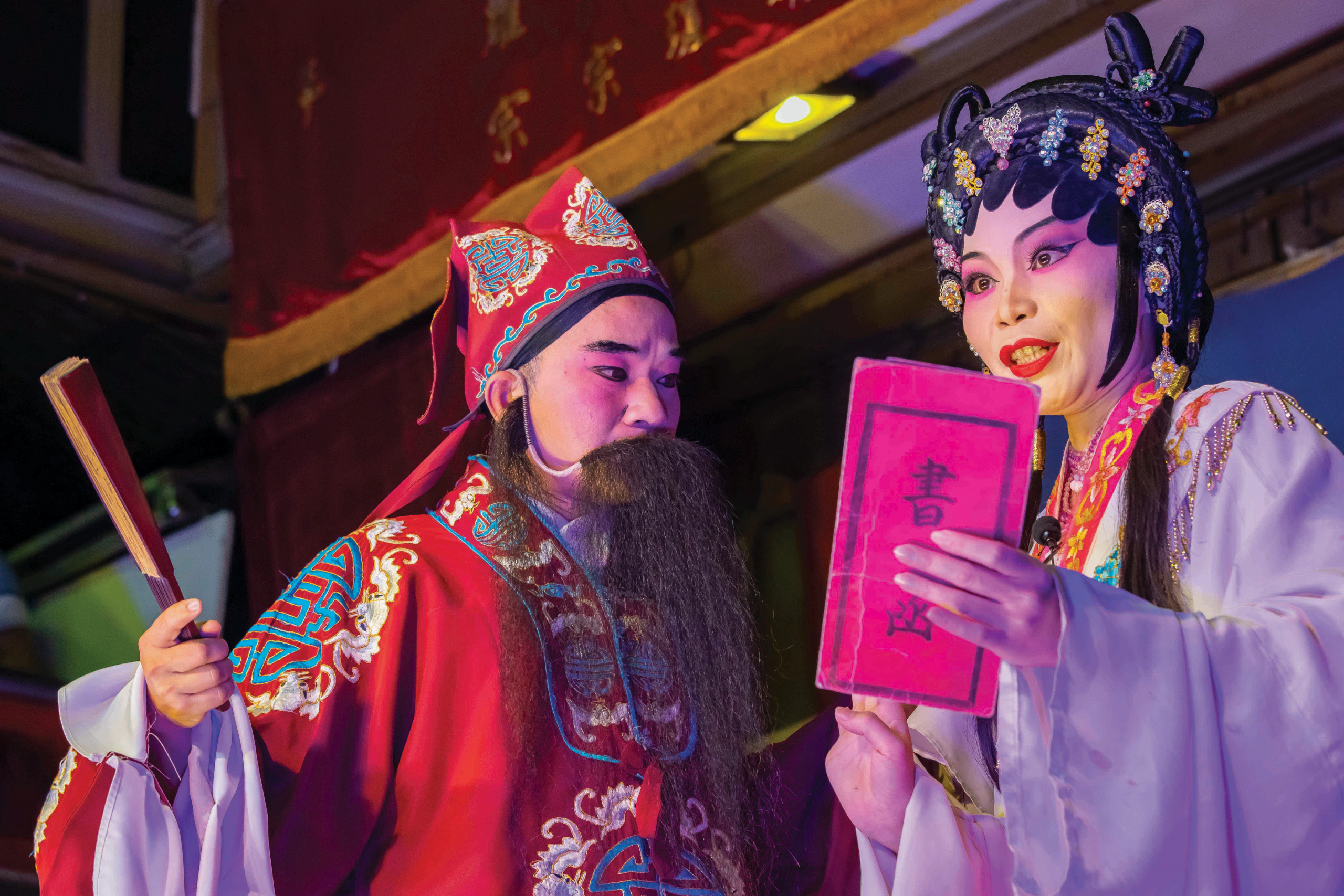
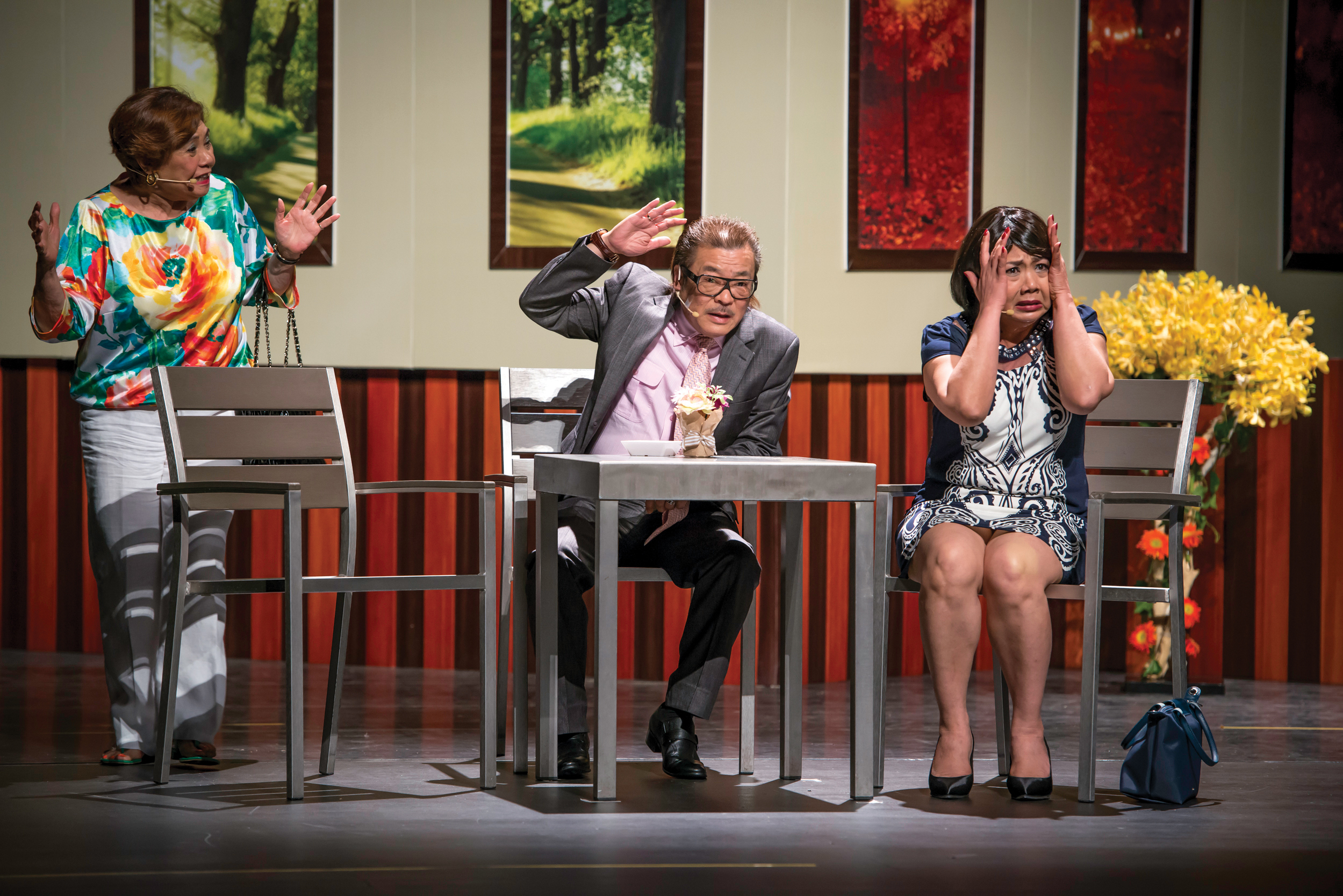
Art expressions and items of performing nature
- Yueju Opera (Cantonese Opera)
Prevalent in Cantonese-speaking regions including Macao and Hong Kong, Yueju Opera features bright make-up and exquisitely embroidered Cantonese costumes. - Cantonese Naamyam (narrative songs)
Originating from the Pearl River Delta region, these songs were originally performed by blind people. They tell great stories and have been known to last many weeks. - Taoist Ritual Music
The ritual music of Taoism is an integral part of traditional Chinese folk music. Nearly 500 items of
this music have been preserved in Macao. - Patuá Theatre
Patuá is a language system that was once formed by Portuguese immigrants in Macao. Patuá theatre expresses the unique characteristics of the language on the stage.
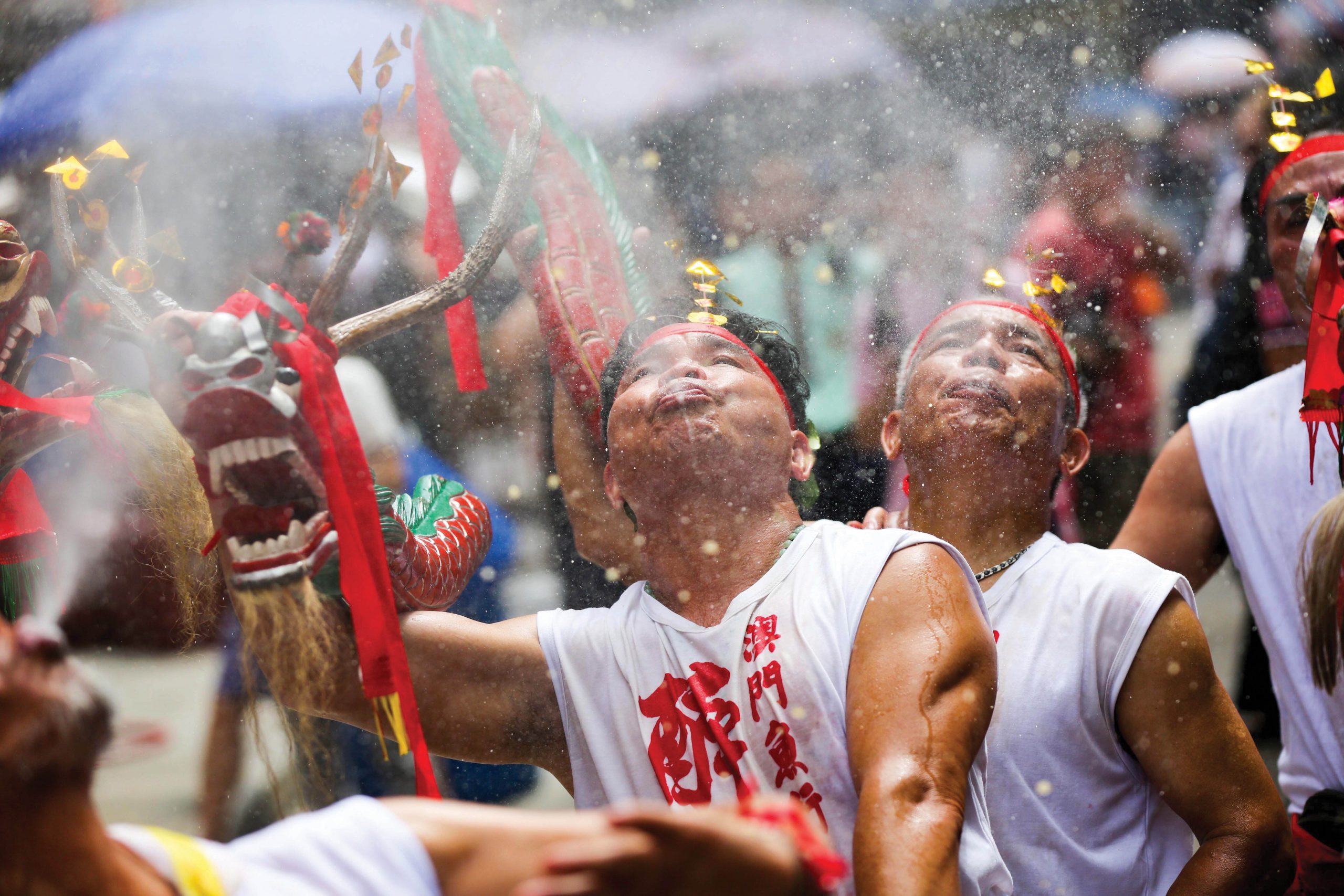
Social practice, religious practice, rituals and festive events
- Festival of the Drunken Dragon
On the evening of the seventh day of the fourth month of the Chinese lunar calendar, Macao’s fishmongers gather for this colourful feast and dance with a ‘drunken’ dragon. - Belief and Customs of A-Ma
Macao celebrates the Festival of A-Ma on the 23rd day of the third lunar month by burning incense sticks, hanging ornate lanterns and hosting Chinese operas at the A-Ma Temple. - Belief and Customs of Na Tcha
Na Tcha is a child god in Taoism. Many local activities are dedicated to him, including parades, the making of ‘Na Tcha lucky charms’ and firecracker-grabbing races. - Belief and Customs of Tou Tei
This deity is seen by some as protecting the life and health of residents. In Macao, Tou Tei is honoured with altars, temples and a festival on the second day of the second lunar month. - Belief and Customs of Chu Tai Sin
This deity of medicine is the focus of the only water-based ‘jiao’ – a ritualistic ceremony – in the city. It’s held by the fishing community in the fifth month of the Chinese calendar. - Procession of the Passion of Our Lord, the God Jesus
Taking place on the first Saturday and Sunday of Lent in February or March, this two-day Christian procession recalls the experiences of the Passion and the death of Jesus as depicted in the Bible. - Procession of Our Lady of Fatima
This procession takes place on 13 May and features two girls and a boy who represent the young shepherds who witnessed the Virgin Mary in Portugal during the First World War.
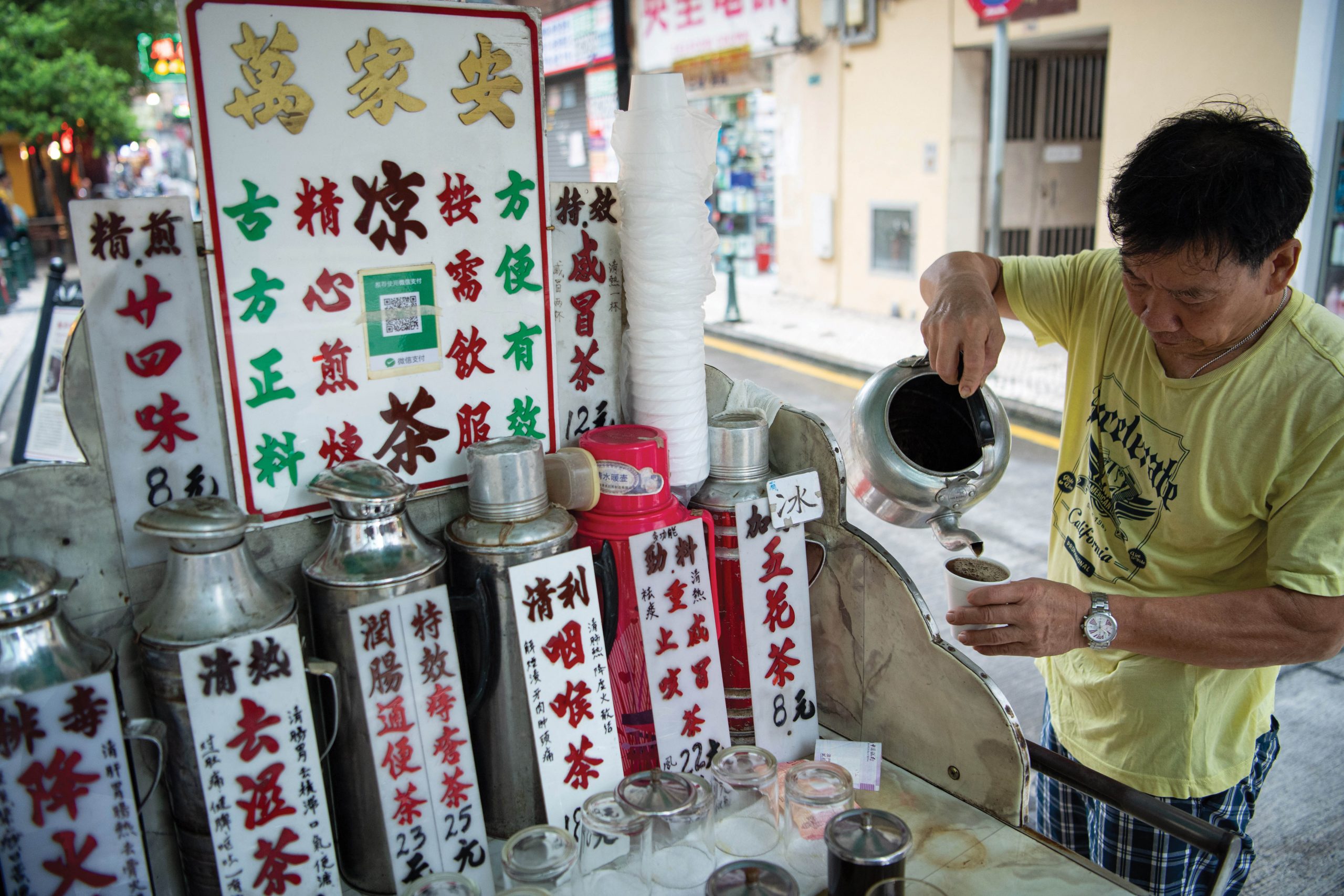
Conventional skills and techniques of traditional handicrafts
- Herbal Tea Brewing
Herbal tea is made from purely Chinese medicinal herbs. It remains popular in Guangdong regions including Macao and Hong Kong. - Woodwork – Religious Figure Carving
This is a real skill and art that has been handed down from generation to generation for almost a hundred years in Macao. - Macanese Gastronomy
The world’s first fusion food and the subject of our main feature in this issue. Turn back a few pages and find out why Macanese cuisine more than deserves to be protected. - Craft of Bamboo Scaffolding
This is certainly an art form in Macao, whether the scaffolding is being used in the construction of big buildings or small arches.
ADDED IN 2020
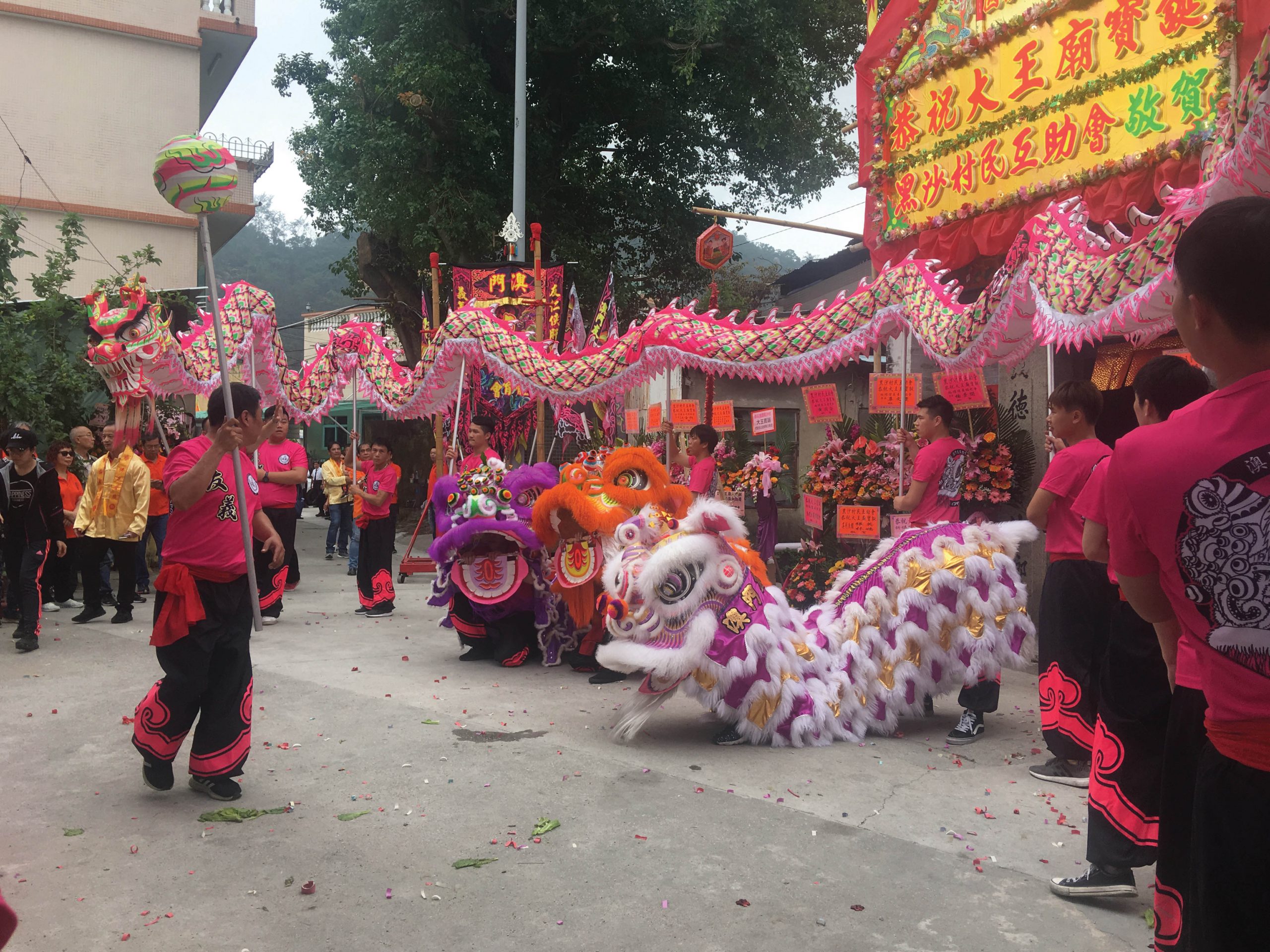
Art expressions and items of performing nature
- Dragon Dance
One of the most beloved performances in local folk festivals and celebrations in Macao. The dance’s shape, composition and movements reflect the people’s worship of nature and convey blessings. - Lion Dance
An auspicious display in traditional Chinese culture, lion dances are performed during temple fairs, weddings and folk festivals to enhance the festive atmosphere. - Portuguese Folk Dance
This dance originated in Portugal’s rural areas as an artistic performance that combines traditional folk dancing, singing and music. It was introduced to Macao hundreds of years ago. - Saltwater Songs
Sung in the Guangzhou dialect, saltwater songs are traditional oral expressions that reflect the culture and daily life of the fishermen in Macao. - Baatyam Percussion
This is part of the traditional Chinese performance art quyi and features Cantonese opera songs that are played using Chinese wind, bowed string, plucked string and percussion instruments.
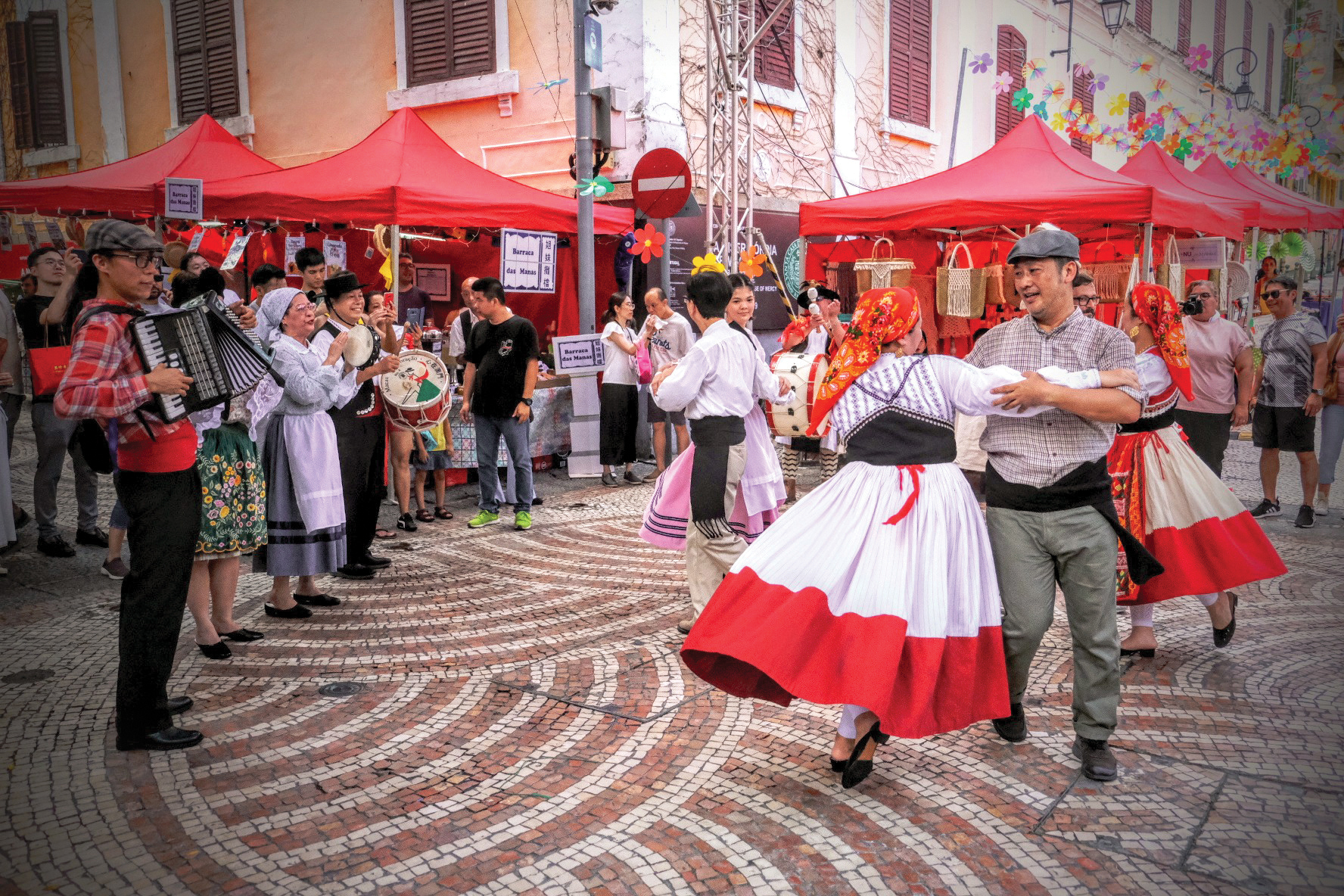
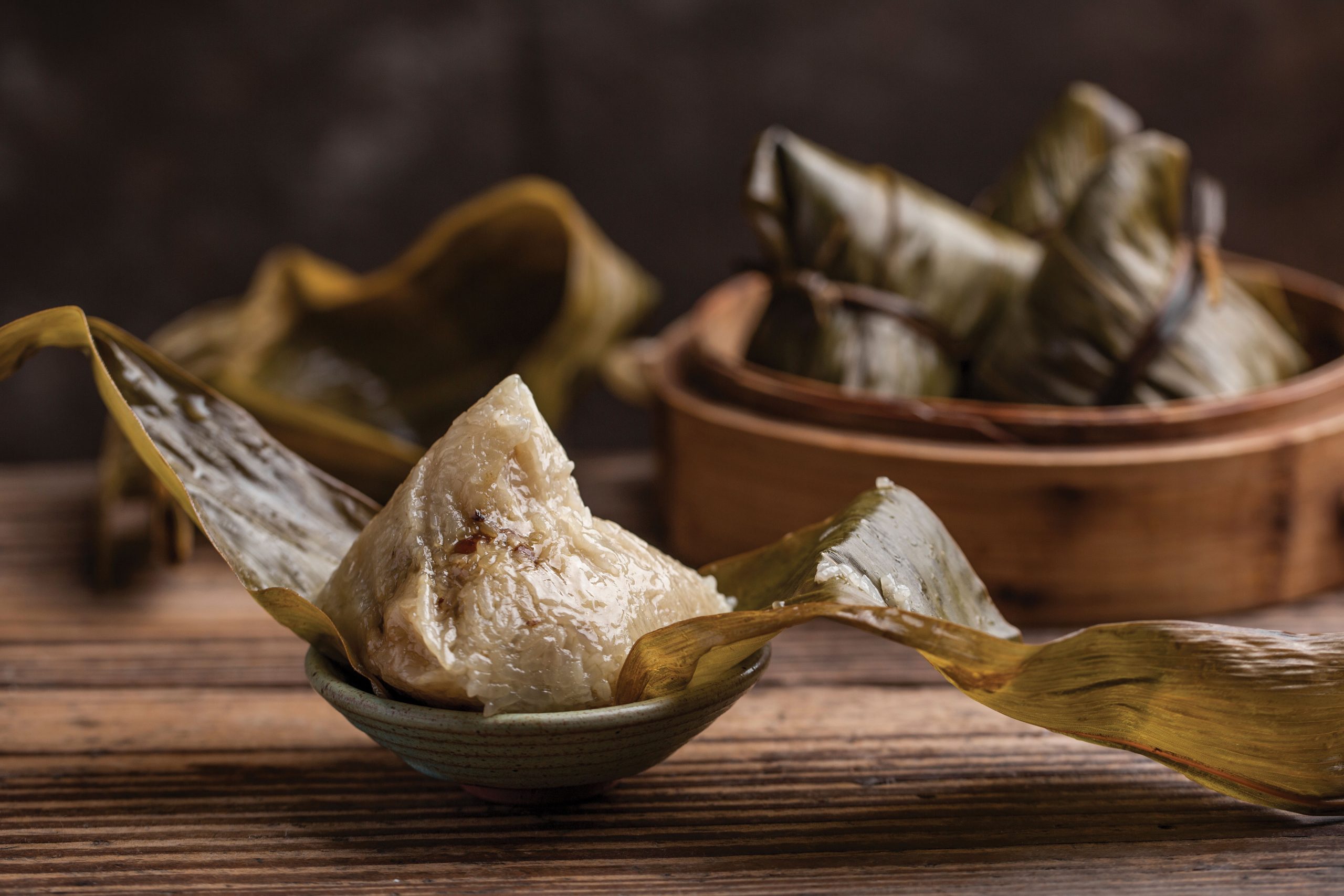

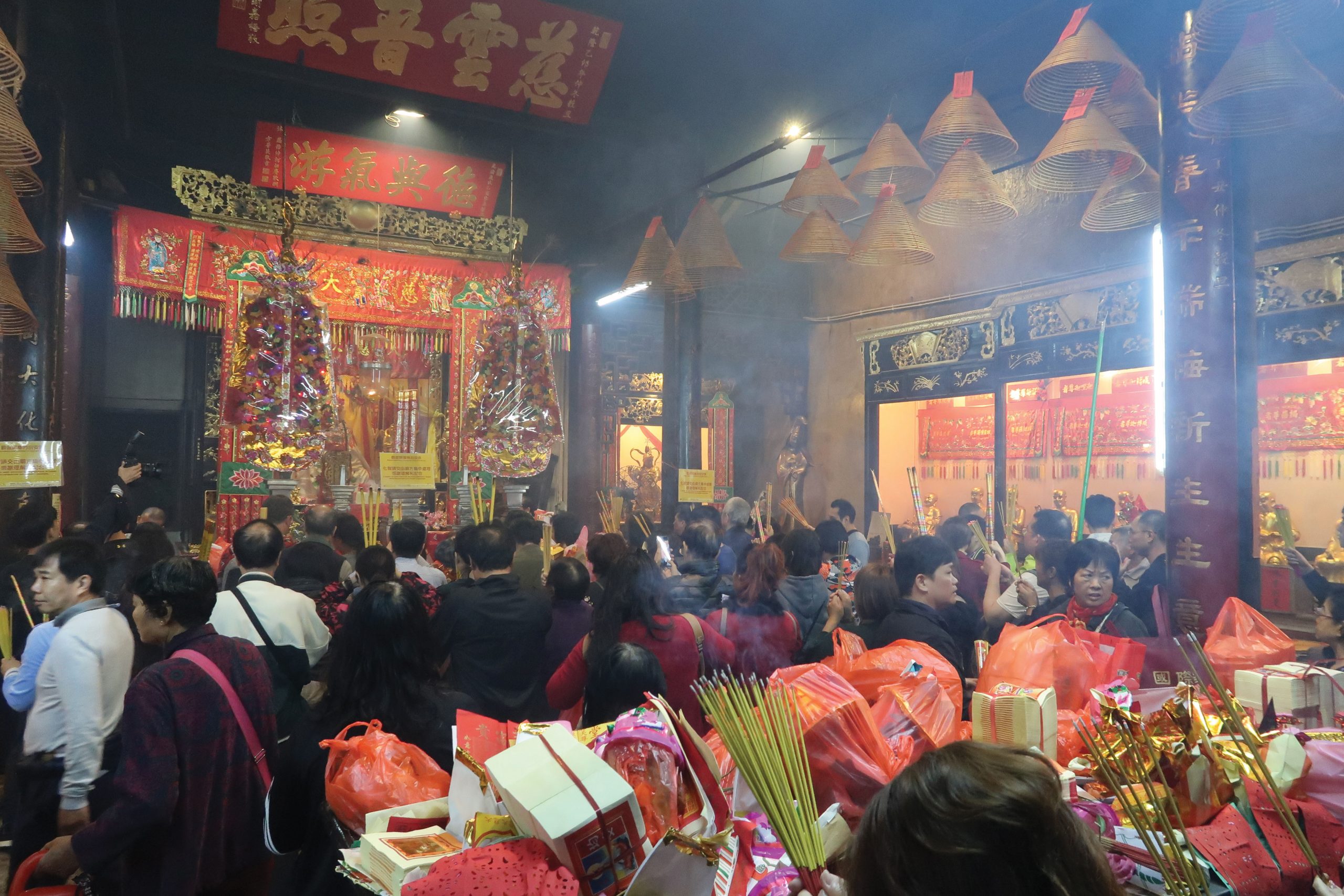
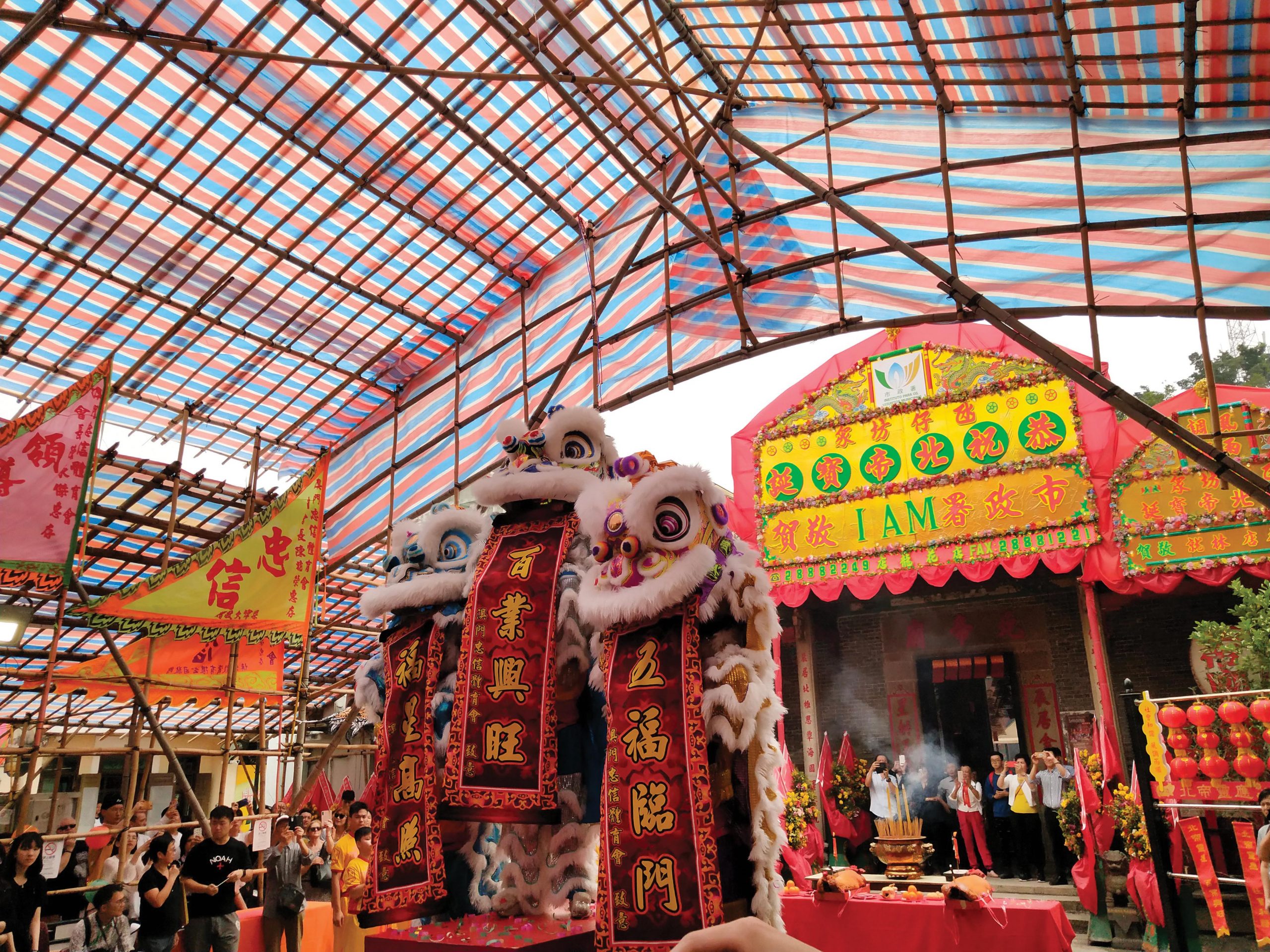
Social practice, religious practice, rituals and festive events
- Procession of the Dead Lord
A parade held by the Roman Catholic Diocese of Macao on the Friday before Easter every year to commemorate the death of Jesus. - Procession of Saint Anthony
A parade held by the Roman Catholic Diocese of Macao around 13 June to celebrate the life of St Anthony of Padua, the patron saint of lost people, items and spiritual goods. - Feast of Saint John
Held in June, this traditional festival commemorates the Portuguese victory against Dutch invaders in 1622. Saint John was believed to have ‘given a hand’ to the brave defenders of Macao. - Procession of Saint Roque
This procession, held in July, pays tribute to Saint Roch, a Frenchman who, it’s believed, performed miracles and saved the sick during the plague in Europe in the 14th century. The local parade originated during a 19th century plague in Macao. - Feast of Saint Martin
Held on 11 November, this is a traditional festival which celebrates an act of kindness by Frenchman Saint Martin, who cut his cloak in half to share with a beggar during the fourth century. - Feast of Immaculate Conception
Celebrated in Macao since the early 19th century, this day marks the Roman Catholic belief that Mary, mother of Jesus, was preserved from original sin from the moment she was conceived. - Spring Festival
This festival is mainly derived from old customs in the Lingnan area. It’s been developed to include activities like thanking the Kitchen God, New Year’s Eve dinner and the New Year’s Eve Flower Market. - Lantern Festival
Held on the 15th day of the first lunar month, the lantern festival is known as the Chinese Valentine’s Day. Celebratory activities include guessing lantern riddles and making lanterns. - Sacrifice Offering to the White Tiger on Insect Awakening Day
Originating from Guangdong and carried out in temples and shrines on 5 or 6 March, this folk custom sees people praying for the safety of their family and to drive away bad luck and sickness. - Cheng Ming (Day of the Departed)
Observed in early April, this traditional custom starts in the morning by paying respect to distant ancestors. Other activities include visiting the graves of close relatives and burning paper money. - Tung Ng (Dragon Boat Festival)
On the fifth day of the fifth lunar month, Macao celebrates this important festival by hosting dragon boat races in the city’s waters, eating rice dumplings and swimming. - Dragon Boat Racing
Dragon boat racing, part of the Dragon Boat Festival, is usually held in June and it’s a massively popular traditional event. Today’s fast-paced international competition is hosted by Macao’s Sports Bureau and other local associations. - Qixi (Single Girls Feast)
A Chinese festival that celebrates the annual meeting of a cowherd and a weaver girl in mythology. People (mostly women) pray for wisdom and a good marriage on the seventh day of the seventh lunar month. - Yu Lan (Hungry Ghost Feast)
During the seventh lunar month, Chinese people in Macao pray for the safety of their homes and families by offering up food and burning paper money for their ancestors and other ghosts. - Chong Chao (Moon Cake Festival)
On the 15th day of the eighth lunar month, the Chinese families in Macao gather together to appreciate the full moon, eat moon cakes and enjoy valuable time together. - Chong Yeong (Worship of the Ancestors)
The Chong Yeong festival, which falls on the ninth day of the ninth lunar month, sees people worshipping their ancestors and praying for blessings. They also host chrysanthemum exhibitions in parks and organise tea parties. - Winter Solstice Festivities
Between 21 and 23 December, the Winter Solstice symbolises the new beginning of the cycle of all living things. Family dinners and the eating of rice balls is traditional in Macao. - Seak Kam Tong Celebrations
On the seventh day of the first lunar month, worshippers celebrate the birthday of Seak Kam Tong, a Taoist deity who wards off evil, eliminates disasters and protects families. - Opening of Kun Iam’s Treasury
On the 26th day of the first lunar month, worshippers visit the temples dedicated to Kun Iam, the Chinese Buddhist goddess of mercy, to pray and ‘borrow money’ from her. - Tai Wong Celebrations
On the 23rd day of the first lunar month, fishermen celebrate the birthday of Tai Wong, a god of the sea, by burning incense, sharing meat, performing lion dances and setting off fireworks. - Pao Kong Celebrations
Pao Kong is a deity and a symbol of justice due to his honesty when he was a politician during China’s Song dynasty. Today, worshippers in Macao celebrate his birthday on the 15th day of the second lunar month in temples dedicated to him. - Festivities of Kun Iam
Kun Iam has a lot of worshippers in Macao. During her birthday on the 19th day of the second lunar month, worshippers visit temples dedicated to the goddess to chant sutras and burn incense. - Pak Tai Celebrations
Pak Tai is a Taoist water god. Worshippers pray to the deity for good weather and protection against disasters and obstacles during his birthday on the third day of the third lunar month. - Festivities of the Day of Buddha
Falling on the eighth day of the fourth lunar month, this day celebrates the birth of the founder of Buddhism. Buddhist temples in Macao organise rituals such as chanting sutras, ‘bathing the Buddha’ and fascinating lectures. - Tam Kong Celebrations
This Taoist deity is seen as the protector of fishermen. Festivities are held to celebrate his birthday on the eighth day of the fourth lunar month. Expect Chinese operas that are aimed at entertaining both the gods and us humans. - Sin Fong Celebrations
On the sixth day of the sixth lunar month, worshippers celebrate the birthday of this Taoist deity and pray for his blessing and protection against disasters. - Lou Pan Celebrations
This Taoist deity is regarded as the protector of craftsmen, carpenters and cement workers. On the 13th day of the sixth lunar month, workers’ unions host rituals and gatherings at temples to celebrate his birthday. - Kuan Tai Celebrations
Kuan Tai is regarded as a Taoist god for his loyalty and courage. He’s seen as the protector of various industries. On the 24th day of the sixth lunar month, activities such as lion dances are held at temples to celebrate his birthday. - Hong Chan Kuan Celebrations
Local temples celebrate Taoist deity Hong Chan Kuan’s birthday on the seventh day of the seventh lunar month by holding lion dances, ribbon cuttings and communal
‘poon choi’ feasts. - Va Kong Celebrations
Va Kong is regarded as the god of fire. Local temples celebrate his birthday on the 28th day of the ninth lunar month with lion dances, fairs and Chinese operas.
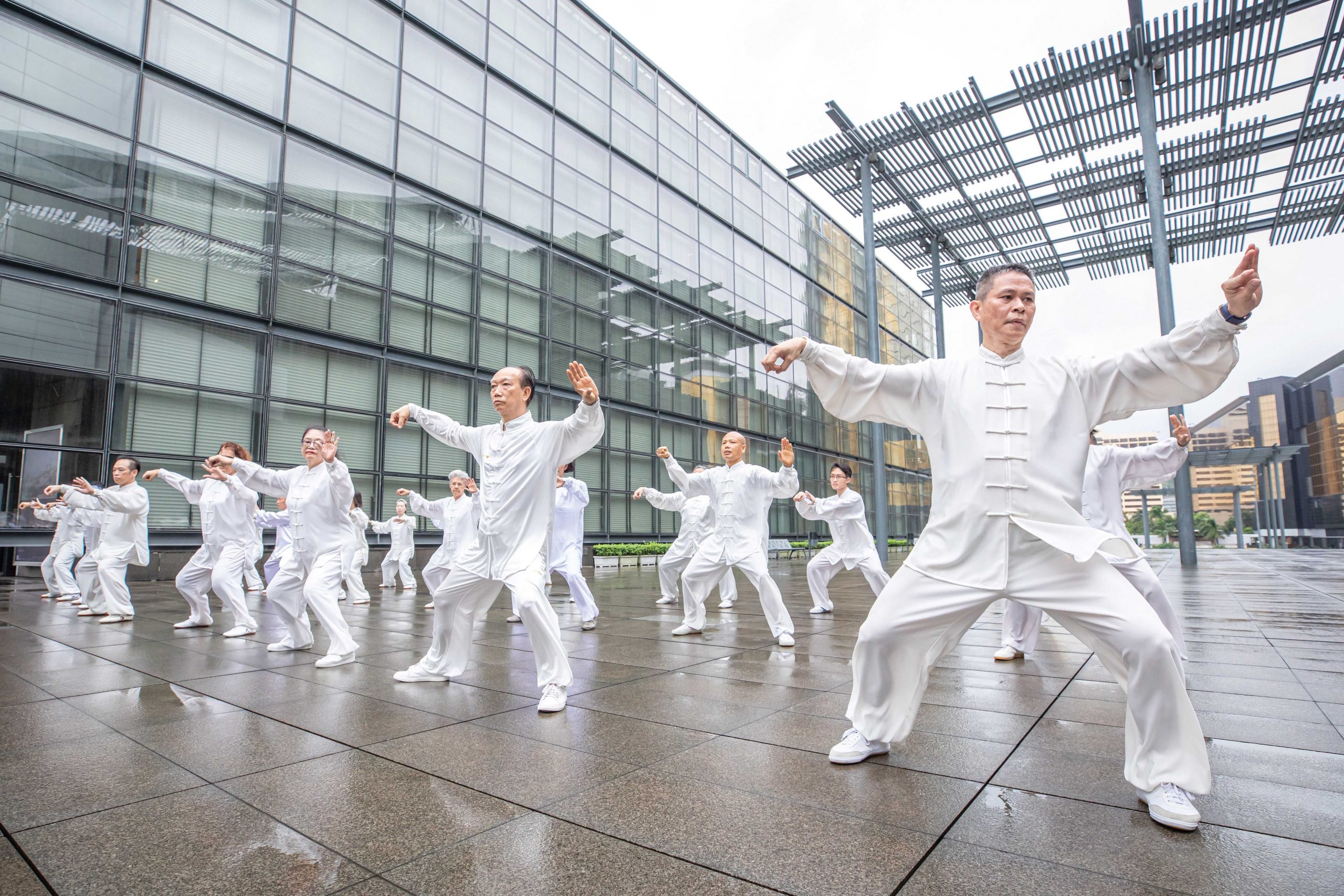
Knowledge and practice regarding nature and the universe
- Tai Chi Martial Arts
Tai chi is a popular martial art in Macao that’s practiced as much for its health and meditative benefits as it is for defence training. Many classes and groups are held by organisations and sports clubs in the city. - Wing Chun Martial Arts
This traditional Chinese martial art that dates back to the Qing dynasty is mainly promoted by martial arts organisations and sports clubs in Macao. It’s a style of self-defence that champions softness and performing its techniques in a relaxed manner. - Choi Lei Fat Martial Arts
Originating in Xinhui, Guangdong, this martial art has been practiced by people in Macao since the 1920s. It emphasises the pursuit of truth, justice and other traditional moral virtues.

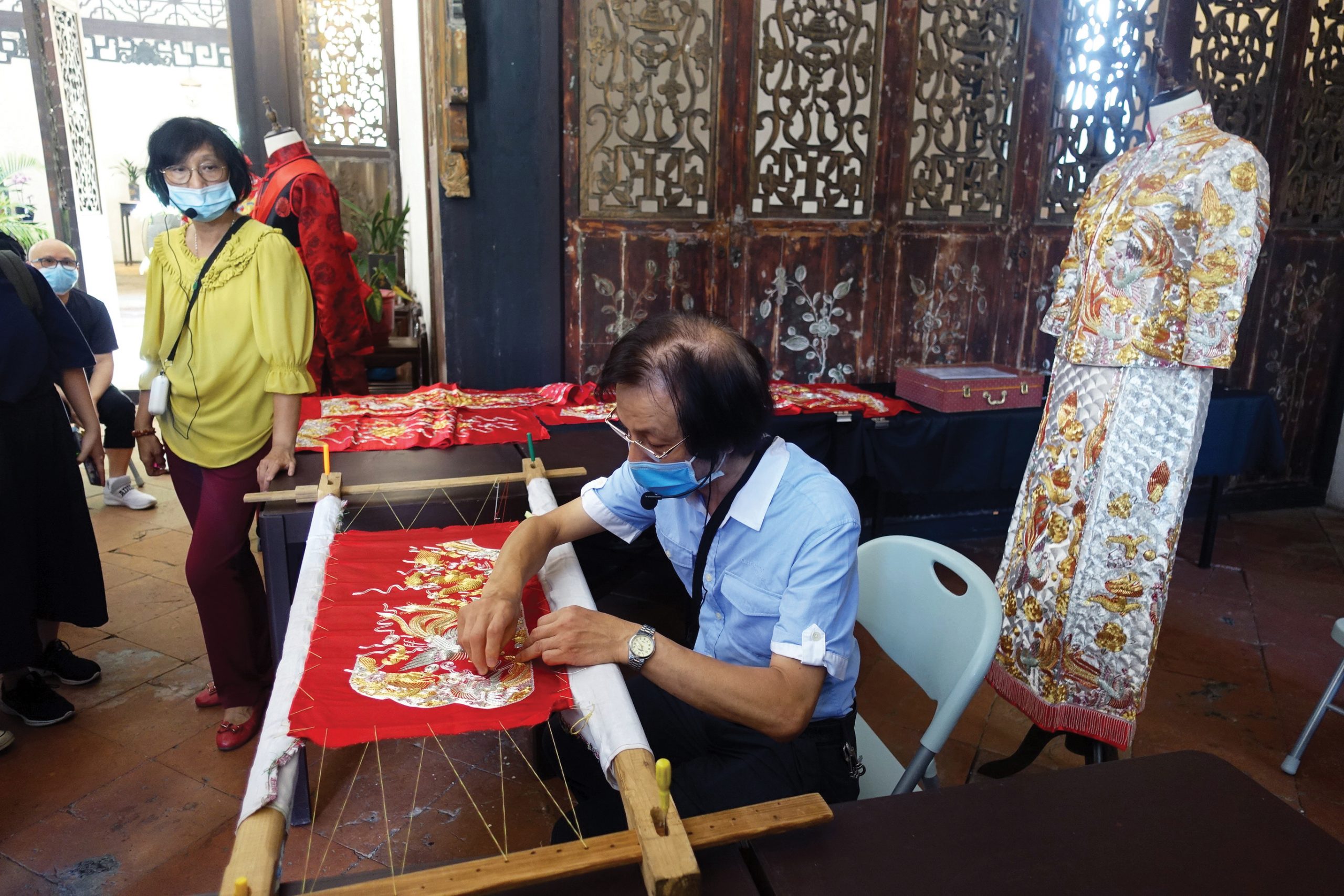

Conventional skills and techniques of traditional handicrafts
- Manufacture and Painting of Portuguese Tiles
Some street signs, churches and other buildings in Macao retain the old Portuguese tile paintings. Those who still create these beautifully ornate tiles in the city are highly skilled. - Manufacture of Cantonese Porcelain
The styles of the Cantonese porcelain produced in Macao are diverse. They include hand-painted patterns characterised by Lingnan folk customs and paintings that cater to Western tastes. - Microgravure in Porcelain
A skilled combination of calligraphy and engraving makes up the elaborate art of microgravure when it comes to porcelain. The artist must carve extremely thin lines on the hard material. - Mass Figure Sculpture
A Chinese folk art that uses steamed dough to create sculptures of mythical characters and figures through techniques like rubbing, kneading, cutting and colouring. - Manufacture of Incense Sticks
Incense sticks are mainly used for worshipping, particularly in religious ceremonies. They’ve been manufactured for more than a century in Macao, with a major boom in the local industry between the 1950s and 70s. - Seong Ka Carpentry
Seong Ka means ‘construction industry’ in Cantonese, so its carpentry refers to the traditional large-scale woodwork which is commonly used in Chinese-style buildings such as temples and residential houses. - Making the Chinese Cheongsam
The beautiful, feminine, body-hugging cheongsam is celebrated today. Many people have made the traditional Chinese costume in Macao over the years using techniques like cloth cutting, soaking, drying, shaping and sewing. - Making Chinese Wedding Dresses
Many people have also made Chinese wedding dresses in Macao over the years. They have to be entirely handmade by only one person so that the pattern remains symmetric and the exquisite embroidery stays consistent. - Macanese Gastronomy – Confection of the Alua
Symbolising the baby Jesus’ mattress, ‘alua’ is a dessert that’s mostly eaten during the Christmas period in Macao. It’s made with glutinous rice flour, coconuts, sugar, almonds, pine nuts and plenty of butter. - Confection of Custard Tarts
Custard tarts – also known as egg tarts – are incredibly popular in Macao. They are made from flour, butter, eggs, milk, cream and sugar, and were originally introduced by the Portuguese. - Confection of Dragonbeard Candy
Dragonbeard – or dragon’s beard – candy is a traditional snack made from glutinous rice flour and maltose syrup, and contains fillings like peanuts, sesame and shredded coconut. Its history dates back 1,000 years in China and it’s cherished in Macao. - Confection of Chinese Pastries
Chinese pastries vary in different regions according to the local culture. The most common types in Macao include almond cakes, white sugar sponge cakes, banana cakes or walnut cookies. - Confection of Almond Biscuits
Almond cake is one of Macao’s most popular Chinese pastries. It originated in the Xiangshan region of Guangdong and was introduced to the city in the early 20th century. It is named after its almond shape and almond flavour. - Confection of Traditional Chinese Wedding Cakes
These cakes are traditional wedding gifts in Macao. Options include the dragon-and-phoenix bride cake, and the red twill and white twill wedding pastry cakes. - Making of Traditional Chinese Sauces
Sauces have a long history in Macao. Years ago, they were all handmade by skilled cooks. Popular varieties still include soy sauce, soybean paste and chilli garlic sauce. - Confection of Preserved Fruits
Preserved fruits are traditional snacks in Macao. They come from the fine tradition of farmers storing and marinating a variety of fruits. - Confection of Jook-Sing Noodles
Exclusive to China’s Pearl River Delta region, jook-sing noodles are made by hand with eggs – traditionally duck eggs. Historically, the chef used to ride a bamboo log like a see-saw so he could press all the ingredients together.

